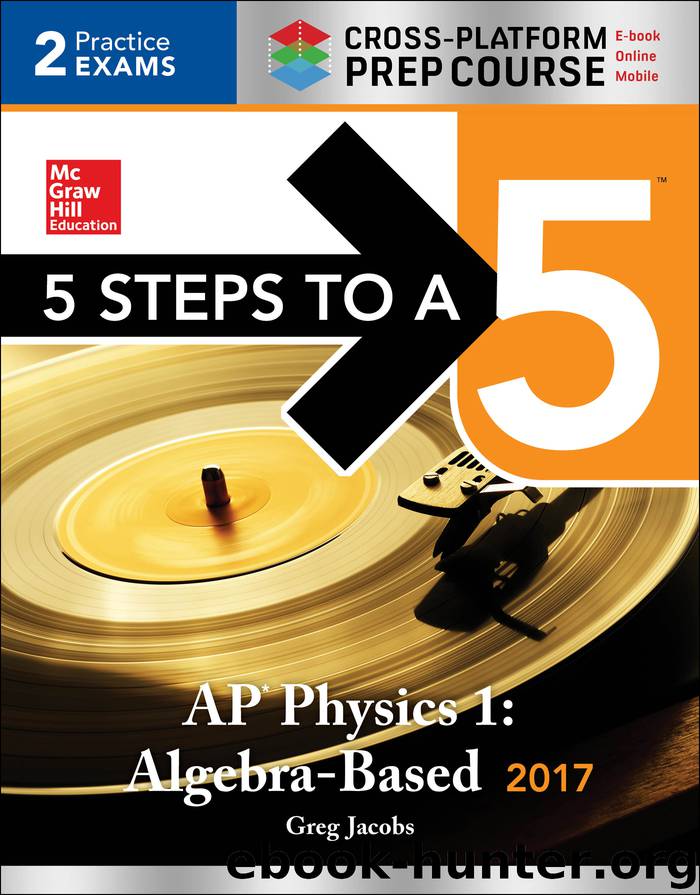5 Steps to a 5 AP Physics 1 2017, Cross-Platform Prep Course by Greg Jacobs

Author:Greg Jacobs
Language: eng
Format: epub
Publisher: McGraw-Hill Education
Published: 2016-08-18T16:00:00+00:00
The forces are as follows:
FN is the normal force of the road on the car.
Weight is the force of the Earth on the car.
Ff is the frictional force of the road on the car.
Wait, why is friction acting to the right? Shouldn’t friction act opposite the direction of motion?
Ah. There certainly could be friction or air drag acting backwards, opposite the direction of motion; but with the car moving at constant speed, that would have to be canceled by a forward engine force.1 Since we know the car moves at constant speed, that’s probably not particularly relevant to the problem.
When a car goes around a flat curve, some sort of force must act toward the center of the circle—otherwise, the centripetal acceleration couldn’t exist. How do we know it’s friction in this case? Imagine the car were moving forward on a slick, flat sheet of ice. The car couldn’t go around a curve at all, then; turning the wheels would do nothing. On an asphalt road, it’s the static frictional force of the asphalt on the tires that pushes the car toward the center of the circle.
No matter what kind of question you’re asked about this situation, the next step is to use Newton’s second law in both the vertical and horizontal directions. Vertically, the car’s acceleration is zero; the car isn’t burrowing into the road or lifting off the road. Horizontally, we don’t have a numerical value for the acceleration, but we know its equation:
Download
This site does not store any files on its server. We only index and link to content provided by other sites. Please contact the content providers to delete copyright contents if any and email us, we'll remove relevant links or contents immediately.
The Secret History by Donna Tartt(18157)
Cat's cradle by Kurt Vonnegut(14757)
All the Missing Girls by Megan Miranda(14718)
Ready Player One by Cline Ernest(13978)
The Compound Effect by Darren Hardy(8508)
Thirteen Reasons Why by Jay Asher(8451)
The remains of the day by Kazuo Ishiguro(8388)
Tools of Titans by Timothy Ferriss(7810)
Wonder by R. J. Palacio(7736)
Change Your Questions, Change Your Life by Marilee Adams(7371)
A Court of Wings and Ruin by Sarah J. Maas(7251)
Giovanni's Room by James Baldwin(6808)
The Leavers by Lisa Ko(6802)
Kaplan MCAT General Chemistry Review by Kaplan(6595)
This Is How You Lose Her by Junot Diaz(6433)
To All the Boys I've Loved Before by Jenny Han(5597)
Wiseguy by Nicholas Pileggi(5315)
The Night Circus by Erin Morgenstern(5034)
Ego Is the Enemy by Ryan Holiday(4954)
